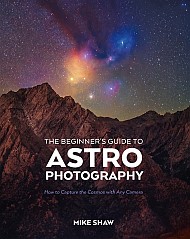Astronomy
Two Years of Listening to the Universe's Most Violent Events
The world's gravitational wave detectors just wrapped up their longest and most productive observation campaign, capturing 250 new collisions over two years of continuous listening. These ripples in spacetime, created by black holes and neutron stars spiralling into each other across the universe, have given scientists their first direct evidence for Stephen Hawking's 1971 theory about black hole surface areas, revealed second generation black holes born from previous mergers, and detected the most massive black hole collision ever observed. The haul represents over two thirds of all gravitational waves ever detected.
Easily taxed grains were crucial to the birth of the first states
Easily taxed grains were crucial to the birth of the first states
Your brain undergoes four dramatic periods of change from age 0 to 90
Your brain undergoes four dramatic periods of change from age 0 to 90
Finding 40,000 Asteroids Before They Find Us
Astronomers have just catalogued the 40,000th near Earth asteroid, a milestone that marks humanity's transformation from passive targets to active defenders of our planet. These space rocks, ranging from house sized boulders to some the size of mountains, follow orbits that bring them uncomfortably close to Earth. Each discovery adds another piece to our planetary defence puzzle, though current surveys have found only about 30 percent of the mid sized asteroids that could still cause regional devastation if they struck our world.
SpainSat NG programme completed as second secure communications satellite launches
Europe has strengthened its secure-communications capabilities with the successful launch of SpainSat NG II on 24 October, wrapping up the SpainSat Next Generation programme supported by the European Space Agency (ESA). With both SpainSat NG satellites now in orbit, Europe will see its most advanced governmental communications system to date, a major step for the continent’s security, crisis-response capacity, and technological autonomy.
First Human Dies of Rare H5N5 Bird Flu Strain. Here’s What You Need to Know
H5N1 bird flu has been circulating in U.S. wildlife since late 2021 but has caused only one human fatality. Now a different type of bird flu has also caused a death
MAHA Summit Features Talk of Psychedelics and Immortality
The Make America Healthy Again summit, attended by RFK, Jr., and J. D. Vance, gave a sense of what’s driving U.S. health policy
Hayli Gubbi Volcano Erupts in Ethiopia for First Time in More Than 12,000 Years
The Hayli Gubbi volcano, long thought to be dormant, sent ash nine miles into the sky in an eruption on Sunday
China to Launch Rescue Shenzhou-22 Spacecraft for Stranded Astronauts
The Shenzhou-22 spacecraft is set to launch November 25
How Bad Will Flu Season Be This Year?
U.S. flu rates remain low, but experts are keeping an eye on a new strain that’s been linked to unexpectedly early and severe seasons in several other countries
GLP-1 Pill Fails to Slow Alzheimer’s Progression in Clinical Trial
Top-line results from two large clinical trials by Novo Nordisk, the company behind Ozempic and Wegovy, found oral semaglutide failed to slow down Alzheimer's progression
City Lights and Atmospheric Glow
A new understanding of causality could fix quantum theory’s fatal flaw
A new understanding of causality could fix quantum theory’s fatal flaw
Thirty Meter Telescope Considers Move to Spain
Spain’s offer to host the powerful observatory, mired in funding obstacles and local controversies, might promise a new path forward.
The post Thirty Meter Telescope Considers Move to Spain appeared first on Sky & Telescope.
The Box vs The Bulldozer: The Story of Two Space Gas Stations
Using in-situ propellant has been a central pillar of the plan to explore much of the solar system. The logic is simple - the less mass (especially in the form of propellant) we have to take out of Earth’s gravity well, the less expensive, and therefore more plausible, the missions requiring that propellant will be. However, a new paper from Donald Rapp, the a former Division Chief Technologist at NASA’s JPL and a Co-Investigator of the successful MOXIE project on Mars, argues that, despite the allure of creating our own fuel on the Moon, it might not be worth it to develop the systems to do so. Mars, on the other hand, is a different story.

_0.thumbnail.jpg)
